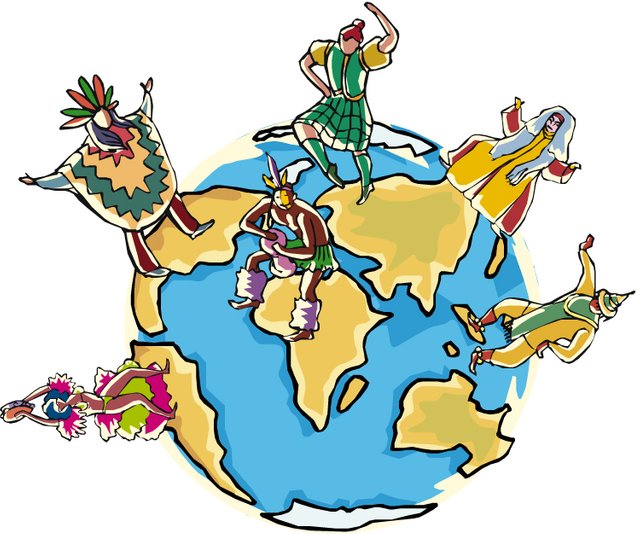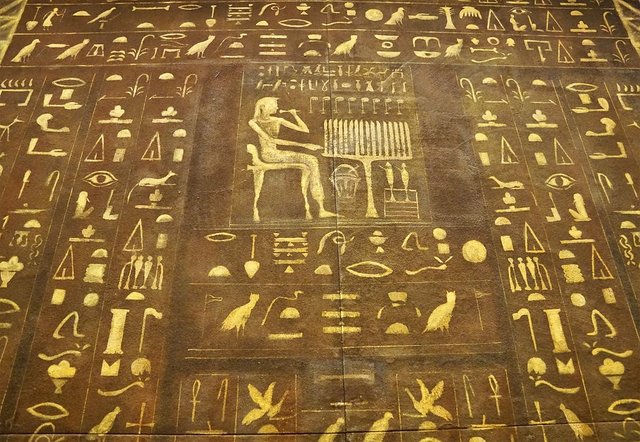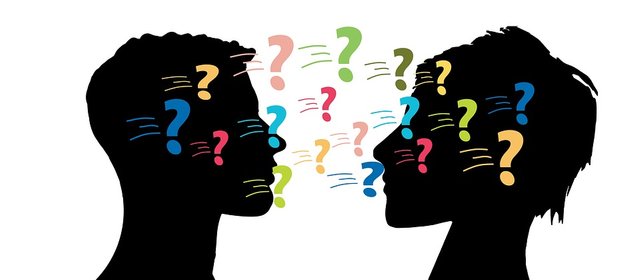Communication : Part 1 - Introduction
Communication
Introduction
According to Haviland (2008), the study of language in its social setting enables the anthropologist to understand how people perceive themselves and the world around them. In this series we take a closer look not only at language, but also at the general process of communication to gain knowledge of people's perceptions of themselves and the world around them.
"The richness of human culture is made possible by language, one of our most distinctive characteristics. Although we are genetically programmed to speak, what we speak is determined by our culture" - Haviland
The ability to use symbols and communicate is one of the most important aspects of what makes us human. Communication is an ordinary human action that we perform every day and, therefore, take for granted. It is important for us to study communication because, as we have already learnt in the previous series on Culture, it performs very a very important function in the context of culture. Communication is essential for people to relate meaningfully to each other and for the continuation of culture, that is, to transmit culture from one generation to the next. Our focus in this series, therefore, is communication in sociocultural context, rather than the actual process of communication, which is the focus of communication studies, a separate aspect/discipline completely. Although we are most familiar with language as a form of communication, you will see that there are also other forms of communication, including myths and different forms of art.
What is communication?
Animals and humans share the ability to communicate. Communication is used to convey messages and ideas, whether between animals or humans. Seymour-Smith (1986, sv "communication") defines the process as the giving and receiving of messages.
Without the ability to communicate, people would be unable to:
- live in a group context
- develop culture
- transmit culture to future generations
- learn from the shared experience of persons who speak the same language
- impart ideas, feelings, news, etc to other people
Human communication differs from non-human communication because:
- it is infinitely open, meaning that the messages can be reorganised in any way
- we can communicate about the past and the future
- it is transmitted through tradition rather than experience
Communication may be a conscious or an unconscious act. For example, a verbal utterance or a sentence is usually a conscious act. In contrast, a facial expression or body movement is often an unconscious act. Such acts nevertheless convey a message to the person receiving them. An act of communication involves both the person who initiates it and the recipient. The recipient receives the message, interprets it and responds to it in some way. This response may be in the form of another communication, it may result in the performance of an action, or it may give rise to an emotion or an idea. Consequently, a response to a message may be evident to other people, or it may be an inward response and thus imperceptible to others.
Meaning in communication
An essential aspect of communication is that there must be a code, which is a system of signs, the meaning of which is understood by both the initiator(s) and recipient(s) of the message. Language is one such code, but not the only one. Visual art and music are examples of codes. In fact, even silence may be a form of communication. For a message to be understood or interpreted, therefore, the people involved in the act of communication must attach the same meaning to the message. Shared meanings are related to shared beliefs, values and attitudes and are therefore based in a common culture. Furthermore, the meaning of a communication is influenced by the setting, or context, in which it takes place.
A message does not necessarily convey to the recipient exactly the same meaning that was originally intended by the initiator. An individual's interpretation of a message is influenced by, among others, his or her life experiences. If the recipient shares a sociocultural orientation with the initiator, such experiences will be similar, but not identical. This means that they will more likely understand the meaning of a message than people with different sociocultural orientations. In the case of cross-cultural communication, or communication between people from different sociocultural backgrounds, there may be a considerable difference between the intended meaning of a message and the meaning ascribed to it by the recipient. People from different sociocultural backgrounds may attach different meanings to a particular term, or a language may not include a term for accurately translating a word from a different language. In such cases, communication problems such as misunderstanding or miscommunication can arise.
Forms of communication
Communication can either be linguistic or non-linguistic. Linguistic communication involves the use of words, either in oral or written form. Thus linguistic communication refers to the use of language in one form or another. Non-linguistic communication takes place without the use of words. Painting as a form of art and gestures, for instance, convey meaning without the use of words. This distinction between linguistic and non-linguistic communication simply means that people communicate verbally and non-verbally. Between linguistic and non-linguistic communication, however, there is also paralinguistic communication, which I will explain in due course.
Linguistic Communication
As I have explained above, the development and transmission of culture are made possible by people's ability to communicate. I also pointed out that there are different forms of communication.We describe linguistic communication, of which language is the most important form. Other forms of linguistic communication are myths and folktales. Myths and folktales are symbolic and often embody and communicate attitudes and values relating to the supernatural, which are important to the society concerned.
The nature of language
Barfield (1997:73) points out that while other animals communicate mainly by means of signs and signals, people communicate mainly through language. Language must be learned, and all normal children acquire language as they develop. According to the linguist Noam Chomsky, language can be explained by the presence in the human brain of a "blueprint" for acquiring language. As children are exposed to their native language, they experiment with this blueprint, accepting those sections of it that are incorporated in their language and rejecting those that are not. Chomsky called this "universal grammar", and it is believed that this universal language is somehow connected to the way that the brain physically functions as a result of mutations in our DNA over generations. While no-one has been able to prove or disprove this theory, Chomsky argues that it is the best explanation of how children acquire language.
End of Part 1
Thank you for reading.
Images are linked to their sources in their description and references are stated below.
Authors and Text Titles
Seymour-Smith 1986: Macmillian dictionary of Anthropology
Barfield 1997: Dictionary of Anthropology
Noam Chomsky: Aspects of the theory of syntax
Ferrao & Andretto 2011: Cultural Anthropology
WA Haviland 2008: Anthropology: The Human Challenge 12th Edition
C Delaney 2004: Investigating Culture
Beattie, J 1964: Other cultures













Another fantastic creation. I'm writing a post which revolves around some of the ideas mentioned here., especially Chomsky. In terms of my expertise I find non-linguistic communication, body-language, fascinating. Looking forward to the next part! Keep it up @zest Also, my dad says you should consider writing textbooks /schoolbooks since your writing is simple and concise, conveys all the necessary information, yet articulate and intelligently expressed (his words).
I am so truly humbled by his words and grateful to you for showing him my post. He is an ICON of mine:)
I have been waiting for your latest post:) it has been way too long:)
But I suppose for good things are worth waiting for!!!
Nice piece on communication buddy.
Technological advancement in this era has further enhanced the concept of communication. In the nearest future, there could be a third part to communication; apart from the linguistic and non-linguistic. And that will be communicating telepathically; i.e brain-to-brain or brain-to-computer.
Awesome piece buddy
I would say Aristotle's Law of Non-contradiction agrees. Without this law, communication would be impossible, and without the ability to communicate ideas, cultures would have no rationale for being formed.
Hey:) , I thought you had forgotten about me. Great to see a comment from you as always!!!!
Thank you! No, I'm like the kid in the class that always sits on the front row. I'm learning so much from you that even if I miss a day or so, I'll be back around soon to catch up. You've got great content!
I am deeply impressed. You are posting nearly everyday and I know how much work it requires! Regarding this post I have always found it easy to communicate in a written form. Im sure it's connected to my introvert nature, but it fits here perfectly so I have a perfect excuse to express myself like crazy ;) And , like the hieroglyph photo !
I tried to maintain it, but it has become really difficult with work starting up again:)
We similar in this aspect:)
waiting for next post... this pressure ;)
You received a 10.0% upvote since you are not yet a member of geopolis.
To read more about us and what we do, click here.
https://steemit.com/geopolis/@geopolis/geopolis-the-community-for-global-sciences-update-3
If you do not want us to upvote and comment on your posts concerning earth and earth sciences, please reply stop to this comment and we will no longer bother you with our love ❤️
Never knew that Noam Chomsky was a linguist, :D I guess you learn something everyday.
Ah ha, I thought you something, not bad for a old man:)
Mhmmm the blueprint-language theory is a really interesting idea. Now I am totally curious about how one eventually could try to test this hypothesis... I will tell u, as i find a way. :P :)
Awesome!!!!!
This is a wonderful and helpful article. So often these days, human communication is taken for granted. It is extremely helpful to have this background. Thank you
Thank you!!!
i know humans and animal communicate but now i also know that the fascinating part of human communication is being able to communicate the past, sure no animal can do that. @zest you did a nice job there
Very nice [email protected] to know you.
Thank you:)
Pleasure to meet you.